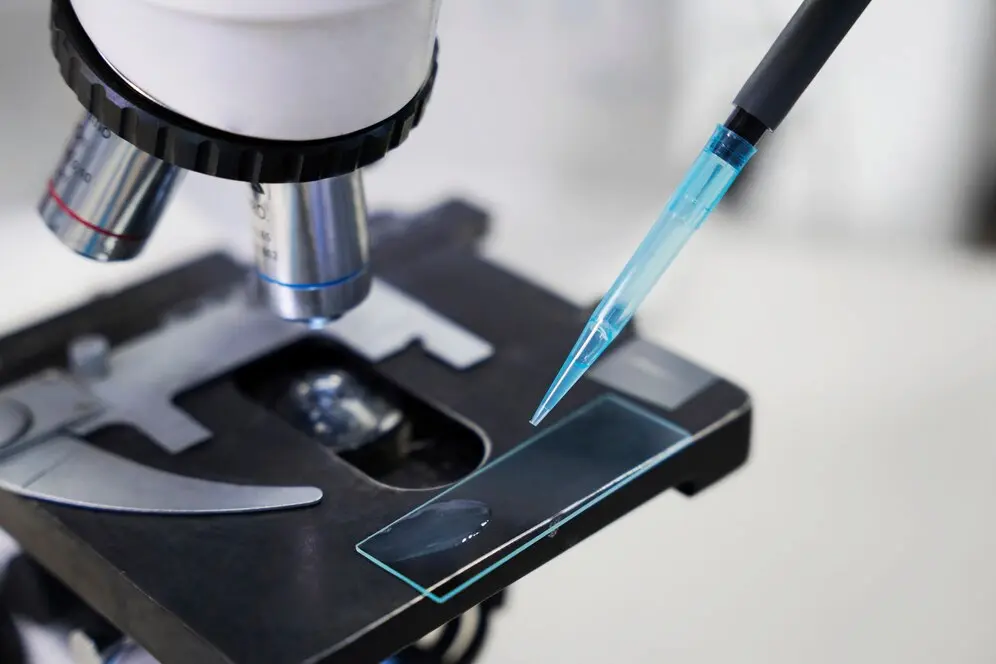How Long Do Germs Live on Surfaces? A Prevention Guide

In sunny Miami, where we enjoy outdoor activities and social gatherings year-round, it’s easy to forget about the invisible threats lurking on surfaces. Germs, including bacteria and viruses, can survive for varying periods on everyday objects, increasing the risk of infection.
Understanding how long germs live on surfaces is crucial for practicing proper hand hygiene and taking preventive measures to protect yourself and your loved ones. Let’s explore the lifespan of germs on different surfaces and empower you with the knowledge to stay healthy in Miami.
How Long Do Germs Live on Surfaces? The Unseen Enemy
The lifespan of germs on surfaces depends on several factors, including:
- Type of Germ: Different types of germs have varying survival rates. Some bacteria can survive for days or even weeks, while certain viruses might only last for a few hours.
- Type of Surface: Non-porous surfaces like stainless steel and plastic tend to harbor germs for longer than porous surfaces like fabric or wood.
- Environmental Conditions: Temperature and humidity can influence germ survival. Generally, germs thrive in warm, moist environments.
Does Hot Weather Kill Viruses? Miami’s Climate and Germ Survival
While Miami’s warm climate might seem ideal for fighting off germs, it’s not always the case. Some viruses, like those causing the common cold or flu, can survive for longer periods in dry conditions. However, high temperatures and humidity can also reduce the survival of certain bacteria.
The bottom line? Don’t rely solely on Miami’s weather to protect you from germs. Consistent hand hygiene and surface disinfection remain crucial.
How Long Do Germs Live on Commonly Touched Surfaces?
Here’s a glimpse into the typical survival times for germs on some common surfaces:
- Doorknobs and handles: Up to several hours or even days for some bacteria and viruses.
- Phones and tablets: Germs can thrive on these frequently touched surfaces for several hours.
- Public transportation handrails: These high-traffic surfaces can harbor germs for a long time, making proper hand hygiene after using public transport crucial.
- Kitchen countertops and cutting boards: Bacteria like Salmonella and E. coli can survive on these surfaces for several hours, highlighting the importance of proper food safety practices.
How to Wash Hands Properly: The Key to Prevention
One of the most effective ways to prevent the spread of germs is through proper handwashing. Follow these steps:
- Wet your hands with clean, running water (warm or cold).
- Apply soap and lather well, covering all surfaces of your hands.
- Scrub your hands for at least 20 seconds, including the backs of your hands, between your fingers, and under your nails.
- Rinse your hands well under clean, running water.
- Dry your hands completely with a clean towel or air dry them.
Hand Hygiene: Beyond Handwashing
In addition to handwashing, practicing good hand hygiene includes:
- Using hand sanitizer: When soap and water aren’t available, use an alcohol-based hand sanitizer with at least 60% alcohol.
- Avoiding touching your face: Germs can easily enter your body through your eyes, nose, and mouth.
- Covering coughs and sneezes: Use a tissue or the crook of your elbow to prevent the spread of germs.
When to Consult a Primary Care Doctor in Miami
If you have any concerns about infections or illnesses, don’t hesitate to reach out to a primary care doctor in Miami. They can provide expert advice, conduct necessary tests, and recommend appropriate treatments. Call Hiriart & Lopez MD at (305) 274-8779 or visit our office at 9950 SW 107th Ave STE 101, Miami, FL 33176.
Disclaimer:
This article is intended for informational purposes only and should not be considered a substitute for professional medical advice. The information provided is based on current scientific understanding of germ survival on surfaces. Always consult with a healthcare professional or qualified expert for personalized advice on infection prevention and control.
FAQs: How Long Do Germs Live on Surfaces?
- Are there any specific surfaces in Miami that I should be extra cautious about? High-touch surfaces in public areas, especially in humid environments, are more likely to harbor germs. These include door handles, elevator buttons, handrails on public transportation, and playground equipment. Be sure to practice good hand hygiene after coming into contact with these surfaces.
- Can I get sick just from touching a contaminated surface? While it’s possible to pick up germs from surfaces, the primary way germs enter your body is through your eyes, nose, and mouth. Touching a contaminated surface and then touching your face increases the risk of infection.
- Does disinfecting surfaces kill all germs? Most household disinfectants are effective in killing a wide range of bacteria and viruses. However, some germs, like norovirus, are more resistant and may require stronger disinfectants or specific cleaning procedures.
- Should I be concerned about catching diseases from public restrooms in Miami? While public restrooms can harbor germs, the risk of getting sick is relatively low if you practice proper hand hygiene. Wash your hands thoroughly with soap and water after using the restroom and avoid touching your face.
- I’m worried about getting sick during flu season in Miami. What precautions should I take? Besides good hand hygiene, get vaccinated against the flu, avoid close contact with sick people, and stay home if you’re feeling unwell. If you experience any symptoms, consult a primary care doctor in Miami for diagnosis and treatment.
Contact Us
Hiriart & Lopez MD, LLC
9950 SW 107th Ave STE 101,
Miami, FL 33176
305-274-8779
Phone: (305) 274-8779
Fax: (305) 274-0646
OPENING HOURS
Monday 7:30 AM–4:30 PM
Tuesday 7:30 AM–4:30 PM
Wednesday 7:30 AM–4:30 PM
Thursday 7:30 AM–4:30 PM
Friday 7:30–11 AM
Saturday Closed
Sunday Closed
OFFICE LOCATION
How Long Do Germs Live on Surfaces? A Prevention Guide

In sunny Miami, where we enjoy outdoor activities and social gatherings year-round, it’s easy to forget about the invisible threats lurking on surfaces. Germs, including bacteria and viruses, can survive for varying periods on everyday objects, increasing the risk of infection.
Understanding how long germs live on surfaces is crucial for practicing proper hand hygiene and taking preventive measures to protect yourself and your loved ones. Let’s explore the lifespan of germs on different surfaces and empower you with the knowledge to stay healthy in Miami.
How Long Do Germs Live on Surfaces? The Unseen Enemy
The lifespan of germs on surfaces depends on several factors, including:
- Type of Germ: Different types of germs have varying survival rates. Some bacteria can survive for days or even weeks, while certain viruses might only last for a few hours.
- Type of Surface: Non-porous surfaces like stainless steel and plastic tend to harbor germs for longer than porous surfaces like fabric or wood.
- Environmental Conditions: Temperature and humidity can influence germ survival. Generally, germs thrive in warm, moist environments.
Does Hot Weather Kill Viruses? Miami’s Climate and Germ Survival
While Miami’s warm climate might seem ideal for fighting off germs, it’s not always the case. Some viruses, like those causing the common cold or flu, can survive for longer periods in dry conditions. However, high temperatures and humidity can also reduce the survival of certain bacteria.
The bottom line? Don’t rely solely on Miami’s weather to protect you from germs. Consistent hand hygiene and surface disinfection remain crucial.
How Long Do Germs Live on Commonly Touched Surfaces?
Here’s a glimpse into the typical survival times for germs on some common surfaces:
- Doorknobs and handles: Up to several hours or even days for some bacteria and viruses.
- Phones and tablets: Germs can thrive on these frequently touched surfaces for several hours.
- Public transportation handrails: These high-traffic surfaces can harbor germs for a long time, making proper hand hygiene after using public transport crucial.
- Kitchen countertops and cutting boards: Bacteria like Salmonella and E. coli can survive on these surfaces for several hours, highlighting the importance of proper food safety practices.
How to Wash Hands Properly: The Key to Prevention
One of the most effective ways to prevent the spread of germs is through proper handwashing. Follow these steps:
- Wet your hands with clean, running water (warm or cold).
- Apply soap and lather well, covering all surfaces of your hands.
- Scrub your hands for at least 20 seconds, including the backs of your hands, between your fingers, and under your nails.
- Rinse your hands well under clean, running water.
- Dry your hands completely with a clean towel or air dry them.
Hand Hygiene: Beyond Handwashing
In addition to handwashing, practicing good hand hygiene includes:
- Using hand sanitizer: When soap and water aren’t available, use an alcohol-based hand sanitizer with at least 60% alcohol.
- Avoiding touching your face: Germs can easily enter your body through your eyes, nose, and mouth.
- Covering coughs and sneezes: Use a tissue or the crook of your elbow to prevent the spread of germs.
When to Consult a Primary Care Doctor in Miami
If you have any concerns about infections or illnesses, don’t hesitate to reach out to a primary care doctor in Miami. They can provide expert advice, conduct necessary tests, and recommend appropriate treatments. Call Hiriart & Lopez MD at (305) 274-8779 or visit our office at 9950 SW 107th Ave STE 101, Miami, FL 33176.
Disclaimer:
This article is intended for informational purposes only and should not be considered a substitute for professional medical advice. The information provided is based on current scientific understanding of germ survival on surfaces. Always consult with a healthcare professional or qualified expert for personalized advice on infection prevention and control.
FAQs: How Long Do Germs Live on Surfaces?
- Are there any specific surfaces in Miami that I should be extra cautious about? High-touch surfaces in public areas, especially in humid environments, are more likely to harbor germs. These include door handles, elevator buttons, handrails on public transportation, and playground equipment. Be sure to practice good hand hygiene after coming into contact with these surfaces.
- Can I get sick just from touching a contaminated surface? While it’s possible to pick up germs from surfaces, the primary way germs enter your body is through your eyes, nose, and mouth. Touching a contaminated surface and then touching your face increases the risk of infection.
- Does disinfecting surfaces kill all germs? Most household disinfectants are effective in killing a wide range of bacteria and viruses. However, some germs, like norovirus, are more resistant and may require stronger disinfectants or specific cleaning procedures.
- Should I be concerned about catching diseases from public restrooms in Miami? While public restrooms can harbor germs, the risk of getting sick is relatively low if you practice proper hand hygiene. Wash your hands thoroughly with soap and water after using the restroom and avoid touching your face.
- I’m worried about getting sick during flu season in Miami. What precautions should I take? Besides good hand hygiene, get vaccinated against the flu, avoid close contact with sick people, and stay home if you’re feeling unwell. If you experience any symptoms, consult a primary care doctor in Miami for diagnosis and treatment.
Contact Us
Hiriart & Lopez MD, LLC
9950 SW 107th Ave STE 101,
Miami, FL 33176
305-274-8779
Phone: (305) 274-8779
Fax: (305) 274-0646
OPENING HOURS
Monday 7:30 AM–4:30 PM
Tuesday 7:30 AM–4:30 PM
Wednesday 7:30 AM–4:30 PM
Thursday 7:30 AM–4:30 PM
Friday 7:30–11 AM
Saturday Closed
Sunday Closed

